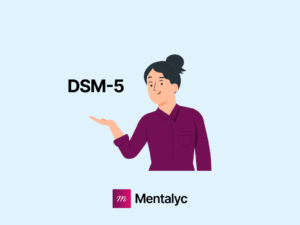First let's see What is a CPT Code?
A CPT code, or Current Procedural Terminology code, is a medical code used to describe medical, surgical, and diagnostic services and procedures. CPT codes are part of a coding system created by the American Medical Association (AMA). These codes, used by healthcare providers, insurance companies, and accreditation organizations, identify specific services provided to patients and clients.
CPT codes are required for billing, allowing healthcare providers to communicate effectively with payers (insurance companies) about patient services. Accurate codes ensure that healthcare providers are efficiently reimbursed for their services.
CPT codes are divided into three categories:
Category I. These five-digit numeric codes describe a procedure or service consistent with widely performed contemporary medical practices. Category I codes are the most used and are divided into sections based on the type of service or procedure, such as Evaluation and Management.
Category II. Optional alphanumeric tracking codes measure performance and outcomes to facilitate quality of care data collection.
Category III. These are temporary alphanumeric codes for emerging technologies, services, and procedures. They are used for procedures that are not widely performed or are considered experimental.
CPT codes are updated annually to reflect the latest healthcare services and procedures, ensuring the coding system remains current and comprehensive.
CPT Code 99404
This code is used for the billing and coding of preventive counseling services provided by healthcare providers. CPT code 99404 is a specific billing code used by healthcare professionals to document and charge for individual, intensive counseling sessions aimed at helping patients quit tobacco use – provided these sessions last more than 10 minutes. This code falls under the category of preventive medicine services in the CPT coding system, which includes various counseling and risk factor reduction interventions provided by healthcare professionals.
The service involves one-on-one counseling between a healthcare provider and a patient with the primary goal of tobacco cessation. Counseling is considered "intensive," indicating a comprehensive approach to address the patient's tobacco use.
Strategies may include:
Discussing the health risks of tobacco use.
Developing a quit plan.
Addressing barriers to quitting.
Providing motivational support.
Discussing pharmacotherapy options or other aids to support the cessation process.
Tobacco use is a public health issue linked to many diseases and conditions. Providing targeted, intensive counseling to help individuals quit tobacco can lead to improved health outcomes, reduce the risk of tobacco-related diseases, and decrease healthcare costs associated with treating these conditions. CPT code 99404 supports clinicians in offering these vital services and facilitates the billing process for such interventions.
A session billed under CPT code 99404 must exceed 10 minutes. This duration underscores the intensive nature of the counseling provided. The length of the session may vary, and documentation should reflect that. Sessions longer than the minimum requirement still falls under this code, provided they are part of individual counseling for tobacco cessation.
Who Can Perform the Service?
Services under CPT code 99404 can be provided by qualified healthcare professionals authorized to offer such counseling, including nurses, physician assistants, psychologists, licensed social workers, licensed mental health professionals, and other providers with the skills and credentials to conduct intensive tobacco cessation counseling.
Billing and Reimbursement
Utilizing this code for billing purposes requires accurate documentation of the service provided, including the duration of the counseling session and the specific tobacco cessation strategies involved in treatment. Reimbursement rates for this code can vary by payer, including Medicare, Medicaid, and private insurance companies, and providers need to verify coverage and reimbursement details with specific payers.
When billing for services under CPT code 99404, healthcare providers must ensure documentation accurately reflects the services provided, including the content of the counseling and its duration, to support the billing claim and justify the use of this specific code.
Code Time
CPT code 99404 is used for counseling sessions that are "intensive" and last more than 10 minutes. The counseling session must last longer than 10 minutes to qualify for this code.
Reimbursement
The reimbursement for CPT code 99404 may vary depending on factors like the patient's insurance plan, the provider's location, and the specific circumstances of the counseling session. Reimbursement rates may vary from one insurance company to another, so checking the current reimbursement rate with the particular payer or billing department is essential.
Understanding these factors can help healthcare providers navigate the billing and reimbursement process effectively. Here's a detailed examination of the elements that influence CPT code 99404 reimbursement:
Patient's Insurance Plan
Type of Insurance: Reimbursement rates can differ significantly between Medicare, Medicaid, and private insurance companies. Each insurer provides a fee schedule and guidelines for preventive services like tobacco cessation counseling.
Coverage Details: Some insurance plans may have specific coverage limits or conditions for preventive services, including tobacco cessation. For instance, specific plans might cover a limited number of sessions per year or require copayments.
Plan Variations: Even within the same insurance company, different plans (e.g., HMO, PPO, EPO) can have varying reimbursement rates and rules for covered services.
Provider's Location
Geographical Variations: Reimbursement rates for CPT codes can differ due to regional differences in cost of living and operating costs in different areas. For example, Medicare adjusts its payments through Geographic Practice Cost Indices (GPCIs) to reflect these variations.
State Regulations: Some states have specific mandates regarding coverage for tobacco cessation services, which can influence reimbursement rates and eligibility.
Specific Circumstances
Documentation: Reimbursement can also depend on how well the counseling session is documented. Detailed progress notes supporting the necessity and intensity of the session can impact reimbursement decisions.
Session Length and Frequency: While CPT code 99404 covers sessions longer than 10 minutes, the total duration and frequency of sessions provided in a specific time frame might influence reimbursement, especially if there are caps on the number of sessions covered annually.
Payers and Billing Departments
Due to the variability in reimbursement rates and coverage details, healthcare providers must:
Verify benefits. Before the counseling session, checking the patient's coverage for tobacco cessation services can help clinicians avoid reimbursement issues.
Consult payer guidelines. Each insurance payer has its own set of guidelines and fee schedules. Providers should consult these resources or contact the payer to understand the current rates and billing requirements for CPT code 99404.
Stay informed. Insurance policies and reimbursement rates are subject to change. Regularly reviewing updates from payers and professional associations can help clinicians stay informed about any changes affecting billing for tobacco cessation counseling.
While reimbursement for CPT code 99404 can vary, understanding these factors and effectively navigating the billing and insurance landscape can help healthcare providers maximize reimbursement for valuable tobacco cessation counseling services.
Modifiers
Depending on the specific situation and the policies of the payer or insurance company, modifiers may be required or recommended. Common modifiers used with this code include -25 (Significant, separately identifiable evaluation and management service by the same clinician or other qualified professional on the same day of the procedure or other service) or other modifiers as appropriate.
Documentation Requirements
Proper documentation is essential when using CPT code 99404. The provider should maintain detailed records of the counseling session, including the date, start and end times, the content of the counseling session (including discussions related to tobacco cessation), interventions and strategies, and relevant clinical notes. Clear and thorough documentation is essential for both clinical purposes and billing compliance.
Frequency
The application and frequency of CPT code 99404 rely on several critical considerations tailored to the patient's unique circumstances and needs.
Understanding Patient Needs
Initial Assessment: The provider must first evaluate the patient's readiness to quit, dependence on tobacco, and any previous cessation attempts. This assessment helps tailor the counseling approach and determine the intensity and frequency of sessions.
Customized Treatment Plan: The provider will develop a treatment plan that specifies session frequency. This plan considers the patient's barriers to quitting, support systems, and preference for counseling sessions.
Clinical Judgment and Evidence-Based Guidelines
Guidelines for Tobacco Cessation: Evidence-based guidelines, such as those from the U.S. Public Health Service, offer recommendations on the effective frequency and duration of interventions for tobacco cessation. Providers may integrate these guidelines with their clinical judgment to decide the optimal counseling schedule.
Adjusting to Patient Progress: The provider must monitor the patient's progress towards quitting tobacco, changing the frequency of counseling sessions as needed. For some patients, intensive counseling might be required more frequently at the beginning of the cessation process and less often as they gain confidence and skills to manage their tobacco use.
Frequency Considerations
Initial Intensive Phase: Early in treatment, more frequent sessions may be beneficial to provide the patient with robust support and coping strategies. The exact frequency can vary from weekly to biweekly sessions, depending on the patient's needs and the provider's assessment.
Maintenance Phase: As the patient makes progress, the sessions might become less frequent, shifting focus to maintaining abstinence and preventing relapse. The provider might schedule follow-up sessions monthly or as needed based on the patient's risk of relapse and ongoing challenges.
Practical Limitations
Insurance Coverage: The patient's insurance coverage can also influence the frequency of sessions. Some insurers may limit the number of covered sessions per year, necessitating a strategic approach to scheduling counseling within those parameters.
Patient Availability: Practical considerations such as the patient's availability and ability to attend sessions must also be factored into determining the frequency of counseling.
Documentation and Rationale
Thorough Documentation: Providers must document the rationale for the frequency of sessions, including how it aligns with the patient's progress and treatment plan. This documentation is vital for justifying ongoing sessions with insurance payers.
Adjusting Treatment Plans: The treatment plan should be considered a dynamic document, reviewed, and adjusted as necessary based on the patient's evolving needs and progress toward cessation.
The frequency of CPT code 99404 is not one-size-fits-all but must be customized to each patient's situation, guided by clinical judgment, evidence-based practices, and ongoing assessment of the patient's progress and needs. Balancing these considerations helps ensure that treatment is effective and sustainable, facilitating the patient's journey toward quitting tobacco.
Conclusion
CPT code 99404 provides a standardized way to bill for individual, intensive counseling sessions for tobacco cessation. The application and frequency of this code are highly individualized, dependent on each patient's unique needs, the clinical judgment of healthcare providers, and adherence to evidence-based guidelines for tobacco cessation. Effective use of this code requires an understanding of the patient's readiness to quit, the development of a tailored treatment plan, and the flexibility to adjust counseling frequency based on patient progress and treatment outcomes.
Practical considerations such as insurance coverage limitations and patient availability influence the frequency and overall approach to tobacco cessation counseling. Healthcare providers must carefully consider these factors, ensuring documentation accurately reflects the rationale for session frequency and intensity to secure appropriate reimbursement and support the sustainability of cessation services.
By leveraging CPT code 99404 effectively, healthcare providers can offer critical support to patients, enhancing their chances of successful smoking cessation and contributing to broader public health goals of reducing tobacco-related morbidity and mortality.
Why other mental health professionals love Mentalyc

“I can take 2–3 minutes after the session and dictate … by the time I’m done, my note from the previous one is ready to go.”
Therapist

“By the end of the day, usually by the end of the session, I have my documentation done. I have a thorough, comprehensive note … It’s just saving me hours every week.”

“It’s so quick and easy to do notes now … I used to stay late two hours to finish my notes. Now it’s a breeze.”
Licensed Professional Counselor

“It takes me less than 5 minutes to complete notes … it’s a huge time saver, a huge stress reliever.”
Licensed Marriage and Family Therapist







